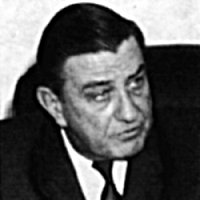Franklin Delano Roosevelt Jr
| Franklin Delano Roosevelt Jr. | |
|---|---|
 |
|
| Member of the U.S. House of Representatives from New York's 20th district |
|
|
In office May 17, 1949 – January 3, 1955 |
|
| Preceded by | Sol Bloom |
| Succeeded by | Irwin D. Davidson |
| Personal details | |
| Born |
Franklin Delano Roosevelt Jr. August 17, 1914 Campobello Island, New Brunswick, Canada |
| Died | August 17, 1988 (aged 74) Poughkeepsie, New York, U.S. |
| Political party |
Liberal Party Democratic Party |
| Spouse(s) |
|
| Relations | See Roosevelt family |
| Children |
|
| Parents |
Franklin D. Roosevelt Eleanor Roosevelt |
| Alma mater |
Harvard University (A.B.) University of Virginia (J.D.) |
| Profession | lawyer, politician, businessman |
Franklin Delano Roosevelt Jr. (August 17, 1914 – August 17, 1988) was an American lawyer, politician, and businessman. He served as a United States Congressman from New York from 1949 to 1955, the first chairman of the Equal Employment Opportunity Commission from 1965 to 1966, and ran twice for Governor of New York. Roosevelt was also a son of President Franklin D. Roosevelt and First Lady Eleanor Roosevelt, and served as an officer in the United States Navy during World War II.
Franklin Delano Roosevelt Jr. was born on August 17, 1914, the fifth of six children born to Franklin D. Roosevelt (1882–1945) and Eleanor Roosevelt (1884–1962). At the time of his birth, his father was Assistant Secretary of the Navy. He was born at his parents' summer home at Campobello Island, New Brunswick, Canada, which is now an international historical park.
His siblings were: Anna Eleanor Roosevelt (1906–1975), James Roosevelt II (1907–1991), Franklin Roosevelt (1909), a brother of the same name had died in infancy in November 1909, having lived only several months, Elliott Roosevelt (1910–1990), and John Aspinwall Roosevelt II (1916–1981).
As a young man in 1936, he contracted a streptococcal throat infection and developed life-threatening complications. His successful treatment with Prontosil, the first commercially available sulfonamide drug, avoided a risky surgical procedure which the White House medical staff had considered, and the subsequent headlines in The New York Times and other prominent newspapers heralded the start of the era of antibacterial chemotherapy in the United States.
...
Wikipedia
